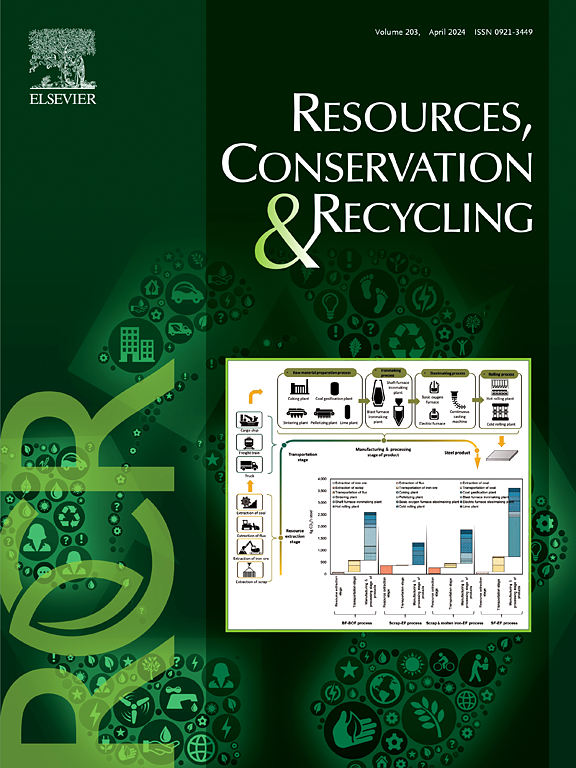典型锂离子电池回收过程的经济评价与预测:多目标评价
IF 10.9
1区 环境科学与生态学
Q1 ENGINEERING, ENVIRONMENTAL
引用次数: 0
摘要
随着人们对锂离子电池需求的不断增加,锂离子电池的回收利用技术越来越受到人们的关注。然而,由于先进的回收技术不足和废lib数量少,效益仍然有限。本研究针对六个典型lib回收过程建立了多目标评价与预测体系。LiNixCoyMn1-x-yO2 (NMC)直接回收工艺的效益最高,为10.07 USD/kg。回收NMC可获得10 - 28美元/公斤的效益,比LiFePO4 (LFP)更高,因为它含有关键金属。阴极再制造过程的收入在每公斤0.64至11.9美元之间。到2040年,Co和Ni在废lib中的市场规模预计为3.8-8 × 109美元和7.5-9.5 × 109美元。高效益情景预测,到2040年,中国的可回收lib总量将达到14.15 × 106美元。本研究为选择有效益的回收方法提供指导,促进金属资源的可持续发展。本文章由计算机程序翻译,如有差异,请以英文原文为准。
Economic evaluation and prediction on typical lithium-ion battery recycling processes: A multi-objective assessment
With the increasing demand for lithium-ion batteries (LIBs), the recycling processes of LIBs have aroused more attention. However, benefits remain limited due to inadequate advanced recycling technologies and low volumes of spent LIBs. In this research, an muti-objective evaluation and prediction system is established for six typical LIBs recycling processes. The direct recycling process of LiNixCoyMn1-x-yO2 (NMC) obtains the highest benefits of 10.07 USD/kg. Recycling NMC can achieve benefits from 10 to 28 USD/kg which is higher than that of LiFePO4 (LFP) because it contains critical metals. The cathode remanufacturing processes generate revenue between 0.64 and 11.9 USD/kg. The contribution of Co and Ni in spent LIBs with the market sizes expected to 3.8-8 × 109 USD and 7.5-9.5 × 109 USD by 2040.The high benefit scenario forecasts total recycling LIBs return to 14.15 × 106 USD by 2040 in China. This research provides guidance for selecting profitable recycling methods, improves sustainable development of metal resources.
求助全文
通过发布文献求助,成功后即可免费获取论文全文。
去求助
来源期刊

Resources Conservation and Recycling
环境科学-工程:环境
CiteScore
22.90
自引率
6.10%
发文量
625
审稿时长
23 days
期刊介绍:
The journal Resources, Conservation & Recycling welcomes contributions from research, which consider sustainable management and conservation of resources. The journal prioritizes understanding the transformation processes crucial for transitioning toward more sustainable production and consumption systems. It highlights technological, economic, institutional, and policy aspects related to specific resource management practices such as conservation, recycling, and resource substitution, as well as broader strategies like improving resource productivity and restructuring production and consumption patterns.
Contributions may address regional, national, or international scales and can range from individual resources or technologies to entire sectors or systems. Authors are encouraged to explore scientific and methodological issues alongside practical, environmental, and economic implications. However, manuscripts focusing solely on laboratory experiments without discussing their broader implications will not be considered for publication in the journal.
 求助内容:
求助内容: 应助结果提醒方式:
应助结果提醒方式:


